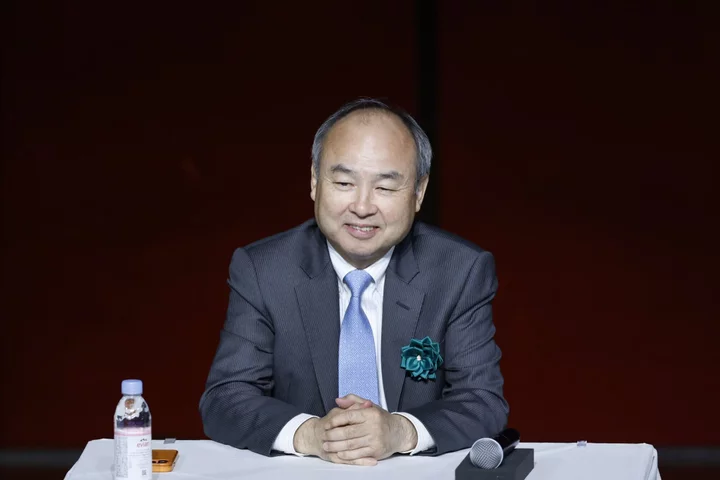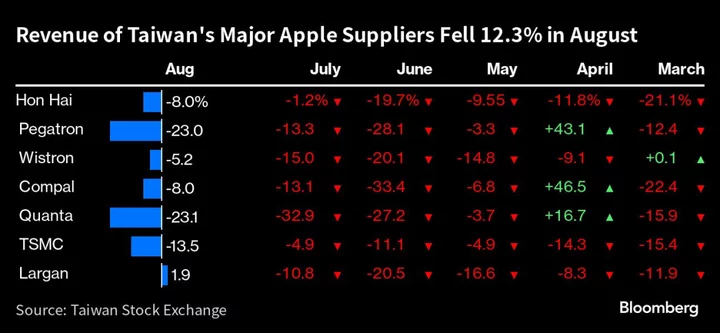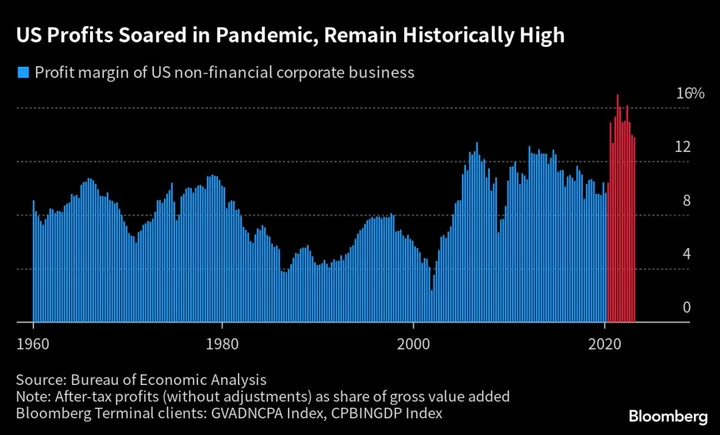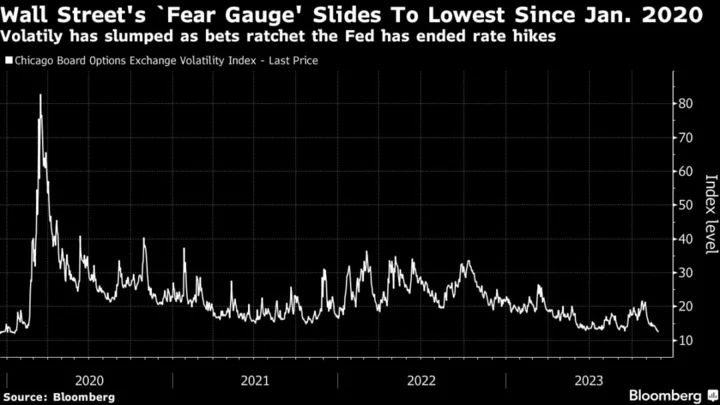SoftBank Group Corp. satisfied its ambitions for Arm Holdings Plc by raising $4.87 billion in the year’s biggest initial public offering, while resisting the temptation to try for more.
Whether Arm’s return to the public market goes smoothly and paves the way for other soon-to-be public companies won’t be known until the chip designer’s shares start trading Thursday.
In Arm’s favor, the IPO was oversubscribed more than 10 times, Bloomberg News reported. That means that investor interest exceeded supply at the offered price range of $47 to $51 a share and could help push up the stock once trading begins.
In setting the price for the IPO, Masayoshi Son, SoftBank’s founder, chairman and chief executive officer, signaled that he was unwilling to undermine that demand even if it meant leaving money on the table.
In the final price-setting meeting Wednesday, some bankers and executives made the case for a higher price, with some of the debate centering on whether $52 made sense, people familiar with the matter said, asking not to be identified because the meeting was private. Son joined the discussion and chose $51, saying it wasn’t worth risking a healthy debut for $100 million or so in additional proceeds, they said.
At the IPO price, Arm is valued at about $54.5 billion, according to Bloomberg News calculations. Underwriters have the option of buying as many as 7 million additional shares.
Long Bet
Son’s approach to the IPO reflects his continuing long bet on Arm, whose chips are found in most of the world’s smartphones. Arm also stands to benefit from the stampede toward artificial intelligence chips and generative AI — an industry shift that has helped give Nvidia Corp. a market value of more than $1.1 trillion.
Founded in 1990 as a joint venture by Acorn Computers, VLSI Technology and what was then Apple Computer Inc., Arm was listed on the London Stock Exchange and Nasdaq from 1998 until 2016, when SoftBank acquired the business for $32 billion.
In 2020, SoftBank tried and failed to sell Arm to Nvidia for $40 billion. That move angered Arm customers who didn’t want to see the company, which supplies the foundational technology used by the mobile-phone industry, fall into the hands of a single buyer.
IPO Pivot
With that deal off the table, Arm pivoted to an IPO in which it earlier sought to be valued at $60 billion to $70 billion, Bloomberg News reported.
While Arm had previously aimed to raise $8 billion to $10 billion in the listing, that target was lowered at least in part because SoftBank decided to buy the roughly 25% stake held by its Vision Fund in a transaction valuing Arm at more than $64 billion, based on Arm’s filings.
SoftBank also decided to hold onto a larger portion of Arm’s shares, leaving only 10% of them for investors that include some of Arm’s biggest customers. As part of the IPO, Arm set aside more than $700 million of the stock for Intel Corp., Apple Inc., Nvidia Corp., Samsung Electronics Co. and Taiwan Semiconductor Manufacturing Co.
The IPO is the world’s biggest this year, surpassing the $4.37 billion listing by Johnson & Johnson consumer health spinoff Kenvue Inc. Arm’s IPO could also be a catalyst for IPOs from dozens of tech startups and other companies whose plans to go public in the US have been stuck during the deepest, longest listing trough since the financial crisis in 2009.
Instacart, Klaviyo
Online grocery-delivery firm Instacart Inc., marketing and data automation provider Klaviyo, Vietnam-based internet startup VNG Ltd. and footwear maker Birkenstock Holding Ltd. have all filed to go public.
Arm’s listing is the largest in the US since electric-vehicle maker Rivian Automotive Inc.’s $13.7 billion offering in October 2021. The IPO is also set to rank among the tech industry’s largest-ever, though still well below the two biggest: Alibaba Group Holding Ltd.’s $25 billion 2014 offering and 2012’s $16 billion debut by Meta Platforms Inc., then known as Facebook Inc.
EXPLAINER: All About Arm, The Biggest IPO of 2023: QuickTake
Though Arm’s technology is used in almost every smartphone, it isn’t well-known among consumers. Arm sells the blueprints needed to design microprocessors, and licenses technology known as instruction sets that dictate how software programs communicate with those chips. The power efficiency of Arm’s technology helped make it ubiquitous on phones, where battery life is critical.
Chip Slump
The overall chip industry is still contending with a sales slump, though, worsened by a glut of inventory.
Arm’s revenue fell about 1% to $2.68 billion for the fiscal year ended March 31, according to its filings. The company’s net income, which jumped to $549 million in fiscal year 2022 from $388 million the previous year, fell this year to $524 million.
Barclays Plc, Goldman Sachs Group Inc., JPMorgan Chase & Co. and Mizuho Financial Group Inc. are leading Arm’s offering. Raine Securities LLC, which is backed by SoftBank, is also acting as financial adviser in connection with the IPO.
Arm’s shares are set to trade on the Nasdaq Global Select Market under the symbol ARM.
--With assistance from Gillian Tan and Amy Or.









